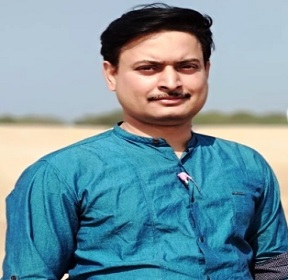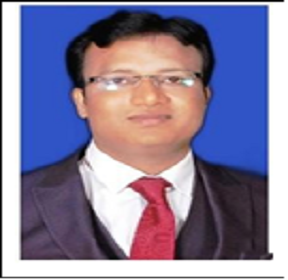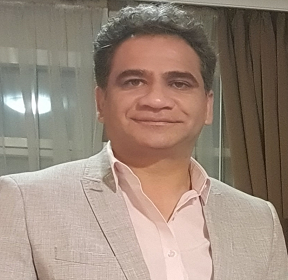Keynote Forum
Speakers
Dr Bhabani Sankar Satapathy
Siksha ‘O’ Anusandhan IndiaTitle: Nanodrug carriers: Evolving strategy to solve bioavailability problems of poorly soluble drugs for successful oral delivery
Abstract:
Poor solubility of majority of pharmaceutical agents has been an everlasting burden for successful oral drug delivery. Low aqueous solubility directly hampers the oral bioavailability and thus the onset of action is unduly delayed. Several compounds have been failed to reach at production stage owing to their low absorption associated with low bioavailability upon oral administration. Poor oral bioavailability restricts the drugs to reach their desired effective concentration in blood to elicit therapeutic action. Thus, strategies to improve solubility and bioavailability of orally administered drugs have been constantly attempted by the formulation scientists. Over last few years, novel drug delivery platforms like polymeric nanoparticles, nanoliposomes, polymeric micelles, solid lipid nanoparticles etc. have been catching the attention of scientists in designing modified drug carriers to enhance the long pending bioavailability issues poor soluble drugs. Such nanodrug delivery platforms owing to their architectural uniqueness protect the loaded cargo against enzymatic degradation plus increase the gastro intestinal absorption to enhance their bioavailability. In recent times, advanced/engineered nanodrug carriers have shown promising potential in solving bioavailability issues of hydrophobic drugs, which needs further discussion and exploration for their future clinical translations.
Biography:
Dr. Bhabani Sankar Satapathy has been a teaching experience of more than 6 years in graduate and post graduate pharmacy courses in several institutions in Odisha and West Bengal also. He was a DST/Inspire research fellow, Govt. of India and completed his PhD from Department of Pharmaceutical Technology, Jadavpur University, India under the supervision of Prof. Biswajit Mukherjee. He was a previous alumnus of Siksha ‘O’ Anusandhan, Bhubaneswar, where, he is now presently working as an Asst. Professor, in the Dept. of Pharmaceutics. He has many research publications in several national and international journals of repute such as in RSC advances, Journal of microencapsulation etc. to name a few. He co-authored 5 book chapters and co-chaired in several scientific seminars across the state. Area of Dr. Satapathy basically includes nanoparticle based drug delivery platforms in cancer therapy.
Dr. Bikash Ranjan Jena
IndiaTitle: Analytical Quality by Design: an emerging tool for Regulatory Flexibility in Chromatography
Biography:
Mr. (Dr.) Bikash Ranjan Jena has over 8.5 years of academic and research experience in the field of Pharmaceutical Analysis, especially systematic development and validation of some selected anticancer molecules employing Analytical Quality by Design (AQbD) approach and Design of Experiments (DoE). Currently, he is perusing his Ph.D. at KL Deemed University, (UGC, NAAC A ++ accredited, Category 1, University) Vaddeswaram, Guntur, A.P., India and working at SoPLS, Centurion University of Technology and Management (CUTM), Jatani , Bhubaneswar, Odisha, India. Till date, he has authored over 30 publications (research & review, short communications, editorials review) in various high impact peer-reviewed journals, 8 book chapters in reputed Publisher like Springer, Elsevier etc., to his credit. He has more than 1yr of industrial experience in Regulatory affairs and more than 6 months of industrial experience in Analytical R & D during his Masters in Pharmaceutical Analysis (M.Pharm). He is also serving as an Advisory Board Member of the journal WJPR, Board Member in 2 international Journal and Reviewer of more than 8 international Peer reviewed impact Journals. he has earned published and cited record (Google Scholar citations 37, Scopus Publications 10, H-Index: 4, Research Gate Score: 10.67). Mr. (Dr) Jena has also participated and presented his research work at various national and international conferences like IPC and life Members of professional bodies like Institute of Scholars (InSc) and APTI, India. He has received recently the “Young Scientist Award-2021” from VD GOOD Professional Association during International Scientist Awards for engineering, Science and Medicine and “Young Achiever Award-2021” from Institute of Scholars (InSc) for outstanding contribution of Research article published in the field of Pharmaceutical sciences.
Ravi Sahu
Wright State University United StatesTitle: Title: Deciphering phospholipid-based signaling mechanisms for lung cancer intervention
Abstract:
Lung cancer is a highly aggressive and difficult to treat human malignancy with poor prognosis. The development of tumor resistance mechanisms to the known therapeutic options pose major challenges in the treatment of lung cancer, and this provides the impetus for the intervention of new approaches. Among various cellular pathways, the phospholipid mediator, platelet-activator factor (PAF) and PAF-receptor (PAF-R) signaling plays critical roles in tumor development and metastasis as well as limiting the efficacy of therapeutic agents via immune and non-immune mechanisms. Studies, including ours, have demonstrated that exposure to pro-oxidative stressors including both environmental and therapeutic agents produce oxidized PAF and PAF-like ligands non- enzymatically via their ability to generate reactive oxygen species (ROS). Importantly, our previous studies have shown that exposure to cigarette smoke (CS) generates PAF-ligands in a PAF-R- dependent manner via mechanisms involving the induction of cyclooxygenase type 2 (COX-2) and regulatory T cells (Tregs). This CS-mediated PAF- R-ligands generation induced systemic immunosuppression in mice expressing PAF-R (WT), but not in PAF-R-deficient (Ptafr-/-) mice. This CS-induced PAF-ligands generation and systemic immunosuppression were mimicked by a known PAF-R-agonist, CPAF. Notably, the generation of PAF-ligands and induction of systemic immunosuppression were blocked by the supplementation of antioxidants, COX-2 inhibitors, PAF-metabolizing, PAF-acetyl hydrolase (PAF-AH) enzyme and depleting antibodies against Tregs, indicating the role of the PAF-R and its downstream effectors in mediating CS-induced effects. As cigarette smoking remains one of the major risk factors for lung carcinogenesis, we hypothesized that the activation of the host-PAF-R that mediates systemic immunosuppression can also modulate the growth of lung cancer in a murine experimental model. To that end, our next studies utilizing WT and Ptafr-/- mice tested if systemic CPAF treatment, which mimicked CS-induced effects, can augment the growth of murine Lewis lung carcinoma (LLC1) cells. We demonstrated that pretreatment of CPAF augmented the growth and metastatic ability of LLC1 tumors in a PAF-R- dependent manner. Analysis of the PAF-R mRNA expression revealed that LLC1 tumor cells lack functional PAF-R expression. This finding was confirmed by the analysis of cell proliferation demonstrating that CPAF failed to induce increased in vitro proliferation of LLC1 tumor cells. While detailed mechanistic studies are warranted, these data indicated that the activation of the host-PAF-R plays an important role in lung cancer development and thus, targeting PAF-R- mediated pathway could be explored as a promising approach for the intervention of lung cancer.
Biography:
Ravi P. Sahu has completed his Ph.D. from Sanjay Gandhi Post Graduate Institute of Medical Sciences and postdoctoral studies from the University of Pittsburgh Medical Center, Texas Tech University Health Science Center and Indiana University School of Medicine. He is currently an Assistant Professor at the Department of Pharmacology and Toxicology at Wright State University Boonshoft School of Medicine at Dayton, OH. He has published over 50 papers in reputed scientific journals and has been serving as an editorial board member and Adhoc reviewer of several journals.
Geert C Mudde
managing director for S-TARget therapeutics Vienna, AustriaTitle: Forensic Toxicology Laboratory Guidelines
Abstract:
Laboratory and Personnel: means and equipment for toxicological analysis should meet an acceptable scientific standard. Laboratory procedures must ensure the safe handling of any hazards (toxic, biological samples, and prohibit), access for the laboratory, must be for only authorized persons (director, quality manger analysts, consultant, evidence officer,..) and an adequate detection, and quantification must be performed for all substances under laboratory scope. Laboratory personnel (director, consultant, analysts) are sufficient trained and experienced to conduct their work and maintained the competency of laboratory. Sample and Receiving: Proper and sufficient samples must be taken to get accurate results. Laboratory director or his designee should develop and provide detailed guidelines and instructions to all agencies which the laboratory serve. Specimens received by the laboratory must identified and store in a good and secure place such that the integrity of the specimens is safeguarded. Acceptable written standard operating procedures (SOP) should be followed. Practical work: All samples and extracts must be labeled in a good manner to ensure the integrity of the analytical results. Chain of custody (COC) very important to document the path of the specimen through the laboratory. Methods and procedures in (SOP) manual must be validated and written in clear manner ,and contain sufficient information, that the analysts can follow them. All documents should be approved by laboratory director or his designee. Any changes in documents (method or procedure) must be clearly documented, stating the reasons for the changes, must be approved also by the director of the laboratory or his designee. Detection by screening techniques (ex: Immunoassay) can apply first, after that confirmatory techniques (Chromatographic Techniques) with proper validated methods, quantitation, and calibration must apply for interpretation of the results. Review and Documentation of The Results: It’s very important for the laboratory to have their own internal quality program, and depending on the type of the laboratory analysis the laboratory should participate in external quality assurance and proficiency testing programs. All analysis results must be documented. This record should include all information necessary to identify the case (name of agency, name of accused person, case number, description, and number of exhibits,…). Review of the results should be run in two steps technical and administrative. The final report must answer all the requesting from all agencies or parties (Request Form) which the laboratory serve. Reference TIAFT-Bulletin XXXI Number 4 p. 23-26
Biography:
Dr. Geert C. Mudde received a Ph.D. in immunology from the University of Utrecht in 1985 and started his international professional career at the Swiss Institute for Asthma and Allergy Research in Davos in 1989. In 1992 he joined the pharmaceutical/biotech industry, where he held several senior management positions at the Novartis Research Institute in Vienna, Austria, the Parke Davis Research Institute in Fresnes, France, Ingenium Pharmaceuticals, Martinsried, Germany, and at igeneon AG, Vienna, Austria. Finally, in 2006, while joining Baxter BioScience in Vienna as interim manager, Dr. Mudde co-founded the biotech company f-star Biotechnology, where he served as “Chief Scientific Officer” from 2007 to 2009. In 2009, together with Christof Langer, he started to develop the S-TIR™ technology platform for human-specific therapeutic vaccines which led to the foundation of S-TARget therapeutics GmbH in 2010. Since then he serves as CSO and managing director for S-TARget therapeutics as well as for the S-TIR™ technology spin-off companies OncoQR ML GmbH and TYG oncology Ltd., which were both founded in 2013
Alberto Morisetti
BSc, ERT. Senior Pharmatox Advisor ItalyTitle: Pitfalls In Nonclinical Safety Data Evaluation
Abstract:
Regulatory safety assessment is based on validated methods and standard procedures within the frame of quality (Good Laboratory Practices). However, when applying the standard methods to obtain and evaluate results in toxicology and safety pharmacology, a thorough critical approach should be applied, as misleading conclusions can result from pitfalls in data collection and subsequent analyses. In fact, nonclinical safety reports should refer data and relevant evaluation in a non-ambiguous manner, to allow go/no-go decision by the sponsor, and finally a positive acceptance by the authorities. Review of dozens of reports revealed a general good appraisal to safety evaluation under different type of studies and in different animal species, however in some cases statements had to be corrected to be consistent with the meaning of the results collected. Statistics is not the only criterion for data evaluation and redundancy of observations (for example daily body weight / food consumption) are often confounding factors owing to a number of significant findings which are meaningless, and sometimes related to changes/errors in procedures. Also, comparison to a control group makes sense in rodent studies, when for many parameters no pre-dose data are available, as is the case in non-rodents. Intra-individual variations (pre- vs post-dose effects) are in fact to be considered in principle, as this comparison more closely reflects the clinical situation. This holds true for both toxicological and pharmacological investigations, the latter being possibly more affected by the complexity of techniques and the amount of data to be evaluated, for example in continuous 24-h ECG telemetry determinations. In conclusion, the present investigation techniques in preclinical studies provide huge amount of data and the automated evaluation tools help the scientists to assess the toxicological profile of the drug under test. A critical evaluation of the applicability of conditions for data analysis coupled with the full knowledge of experimental phases is recommended for a better reliability of the results and to avoid uncertainties and misunderstandings.
Biography:
Alberto Morisetti has graduated in 1980 in Biological Sciences in Milan, Italy and is European Registered Toxicologist. Up to 2009 he worked as Study Director, Study Monitor, Head of Test Facilities for PharmaTox research and development. He is author/co-author of more than 30 scientific publications in the field of regulatory toxicology and pharmacology, mainly related to contrast media, imaging by different techniques, and regulatory issues, anticancer drugs. From 2010 he started the activity of consultancy in R&D for different Italian and foreign pharma companies, working on regulatory as well as industrial toxicology. His activity consists of drawing the nonclinical development plan, CRO selection, study monitoring and reviewing study reports, CTD and participating to meetings with regulatory authorities for anticancer, antibiotic, corticosteroid, medical device projects. Recent activities include EU Commission participation as nonclinical expert.
Wael Mohamed Fathy Abdelnaeem Ahmad
University of Cairo EgyptTitle: Forensic Chemistry Consultant – Center of Forensic and Digital Science
Abstract:
Laboratory and Personnel: means and equipment for toxicological analysis should meet an acceptable scientific standard. Laboratory procedures must ensure the safety handling of any hazards (toxic, biological samples, and prohibit), access for the laboratory, must be for only authorized persons (director, quality manger analysts, consultant, evidence officer,..) and an adequate detection, and quantification must be performed for all substances under laboratory scope. Laboratory personnel (director, consultant, analysts) are sufficient trained and experienced to conduct their work and maintained the competency of laboratory. Sample and Receiving: Proper and sufficient samples must be taken to get accurate results. Laboratory director or his designee should develop and provide detailed guidelines and instructions to all agencies which the laboratory serve. Specimens received by the laboratory must identified and store in a good and secure place such that the integrity of the specimens is safeguarded. Acceptable written standard operating procedures (SOP) should be followed. Practical work: All samples and extracts must be labeled in a good manner to ensure the integrity of the analytical results. Chain of custody (COC) very important to document the path of the specimen through the laboratory. Methods and procedures in (SOP) manual must be validated and written in clear manner ,and contain sufficient information, that the analysts can follow them. All documents should be approved by laboratory director or his designee. Any changes in documents (method or procedure) must be clearly documented, stating the reasons for the changes, must be approved also by the director of the laboratory or his designee. Detection by screening techniques (ex: Immunoassay) can apply first, after that confirmatory techniques (Chromatographic Techniques) with proper validated methods, quantitation, and calibration must apply for interpretation of the results. Review and Documentation of The Results: It’s very important for the laboratory to have their own internal quality program, and depending on the type of the laboratory analysis the laboratory should participate in external quality assurance and proficiency testing programs. All analysis results must be documented. This record should include all information necessary to identify the case (name of agency, name of accused person, case number, description, and number of exhibits,…). Review of the results should be run in two steps technical and administrative. The final report must answer all the requesting from all agencies or parties (Request Form) which the laboratory serve. Reference TIAFT-Bulletin XXXI Number 4 p. 23-26
Biography:
• Post-Doctoral Fellowship (2014-2015), Texas Southern University, School of Public Affair, Forensic Department, Houston, Texas, United States of America. • Ph.D. Biochemistry - Faculty of Science -University of Cairo 2009. • Master Biochemistry - Faculty of Science- University of Cairo 2004. • Diploma of the training program for Arab anti-drug - National Center for Social Research and the Criminal - Egypt • Bachelor of Science Department of Chemistry -Faculty of Science South Valley University 1995. • Forensic Chemistry Consultant – Center of Forensic and Digital Science, Judicial Department, Abu Dhabi, UAE. ( present). • Forensic Toxicologist Technical Supervisor- Forensic and Toxicology Laboratory, Forensic Medicine Authority Cairo – Egypt. (October 2001 – Present). • Ass. Professor (part-time) - Forensic and Toxicology Department, Faculty of Medicine - Beni Suef University-Egypt. (2012- 2017). • Forensic Toxicologist - Forensic and Toxicology Laboratory Forensic Medicine Authority Cairo – Egypt. (October 1998 – October 2001)







